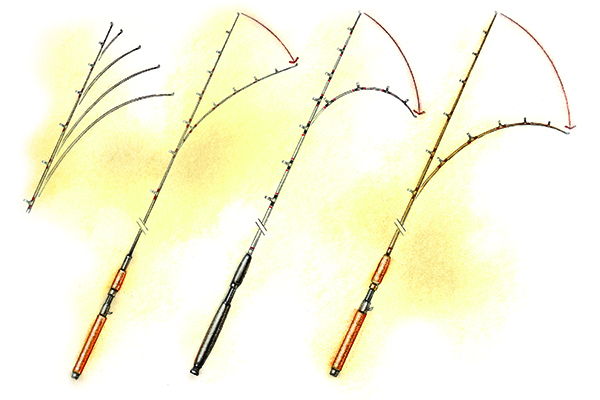January 27, 2017
By Jeff Simpson
The rod blank is an integral component, as it forms an extension of the angler's arm allowing the angler to place a lure or bait some distance. In many presentations, the rod alerts the angler that a fish is biting. Then, with a fish hooked, the rod provides leverage to assist in fighting and retrieving the fish.
When it comes to selecting a rod blank for your custom rod, options are nearly endless. Blanks are made from fiberglass, carbon, graphite, or other materials. Fiberglass rods tend to be a little more "forgiving" than graphite rods in terms of a softer action and they tend not to break as easily. Graphite rods are generally more expensive (although there are plenty of good deals!) than fiberglass, but will deliver more "feel" to you as your lure works it way through the water or a fish strikes. They also give you more power to fight a fish with less weight than fiberglass.
Matching the right rod to the right presentation will increase your success rate—and that means more fish. Most rod descriptions have three parts— rod length, rod "action", and rod "power."
The length is simply how long the rod is from top to bottom. The shortest open-water fishing rods start at about five feet and run up to ten feet or more. Fly fishing rods tend to be longer as they allow the fisherman to cast tiny flies a long distance, but more about that in a minute. In general, longer rods allow you to cast further.
Advertisement
Action is a little more complicated and is affected by the taper of the rod (the change in thickness of the rod from bottom to top), the thickness of the blank itself, and the rod material. All of these factors combine to determine the flex or action of the rod. Rods that have only a small amount of bend towards the tip are said to have an "extra-fast" action, and are well suited for times when fish need to be quickly hooked and lifted from heavy cover. Fast-action rods begin to bend about a quarter of the way down from the tip, while medium-action rods begin to flex more towards the middle of the rod, and provide a good, general purpose action for many fishing techniques and casting. Slow-action rods have the greatest bend, sometimes from butt to tip, so they tend to act as a shock absorber when a fish is pulling on the line. They work well for fighting a fish in close, especially on light line, but not so well for setting the hook.

Rod power refers to the amount of force it takes to get the rod to bend and so is directly related to how "heavy" a line and lure the rod is best suited to for. Often the description on the rod blank include information about the recommended weight of the line and lures to be used with that rod. "Heavy" rods are generally best used with stronger line and can handle heavier lures. These types of rods are good for casting or trolling the big baits that large fish like muskies eat or fishing very heavy cover for big fish. Ratings then progress from "medium-heavy" to "medium" to "light" to "ultra-light."
Advertisement
By having a rod blank best suited for the species you're trying the catch and the presentation you're using, you will be more effective, have more fun, and catch more fish.

